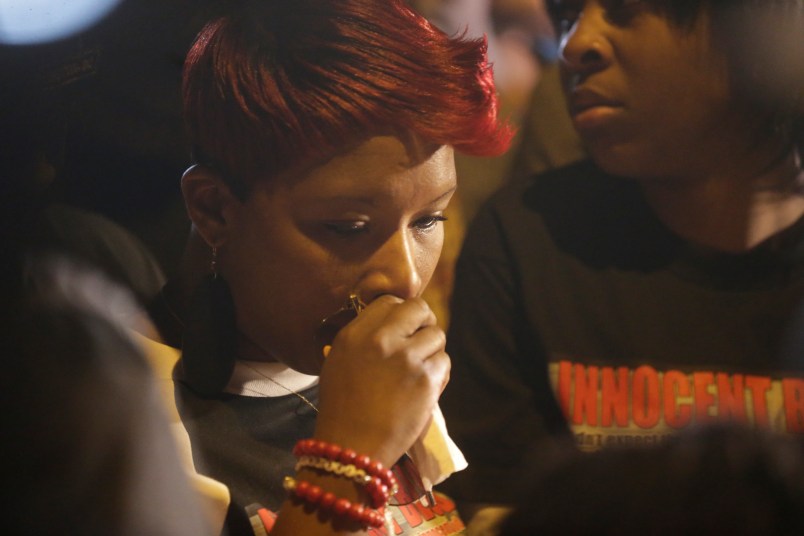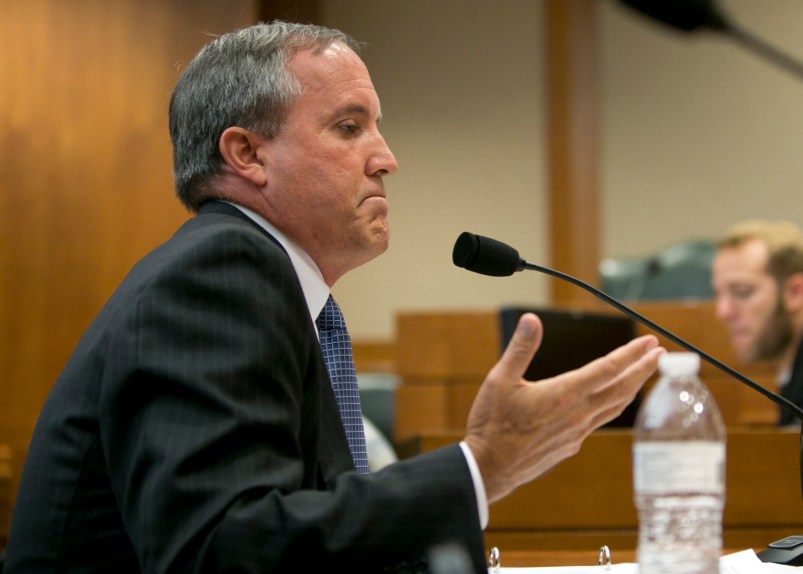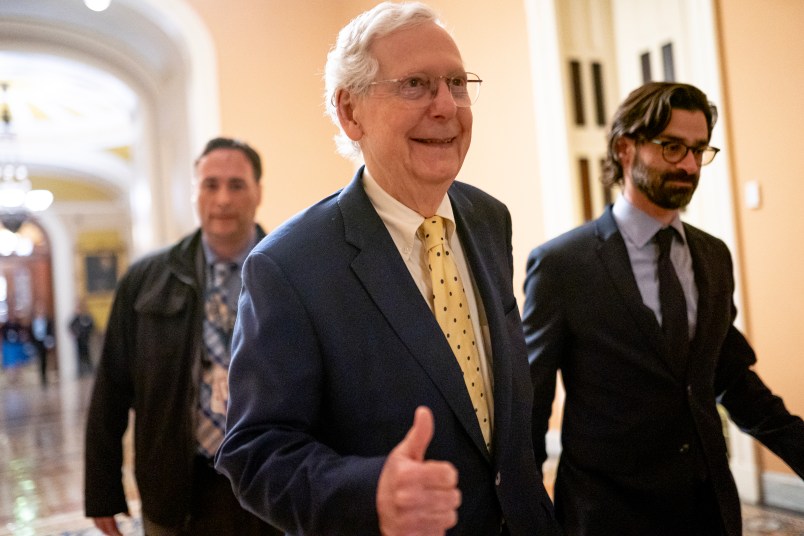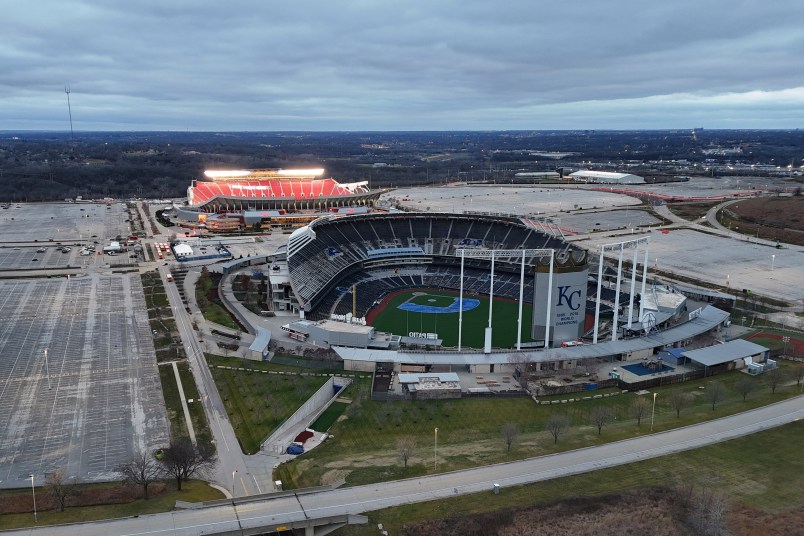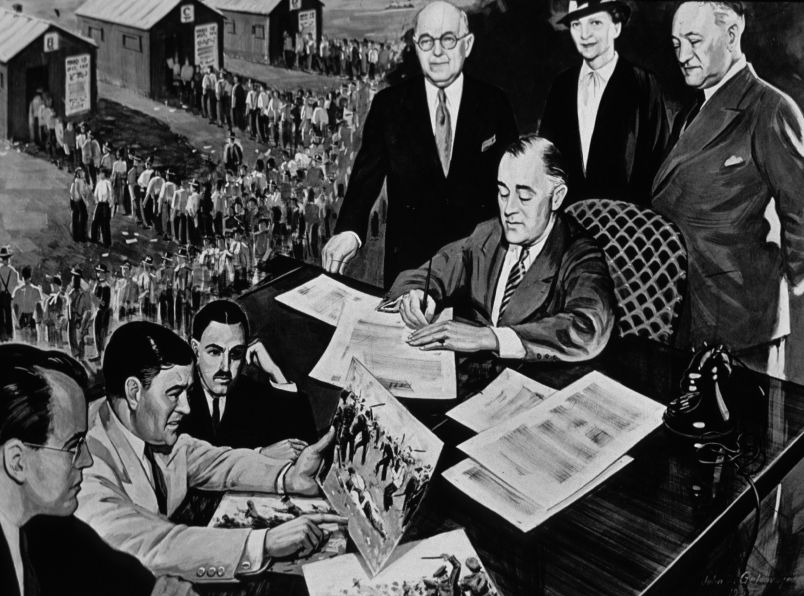Last week was awful. Gun violence struck still another American school and Canada’s War Memorial. We learned that U.S.-led air strikes have killed 32 Syrian civilians so far. Perhaps worst of all, despite all of this, we probably spent more of our week talking about the ongoing Ebola faux-outbreak.
News feeds on the sensational — one of tragedy’s closest cousins. But not all tragedies are suited to a 24-hour news cycle or our flighty national attention span. Some spiral beyond the public’s capacity to follow along. When it’s a missing airplane in the Indian Ocean, it’s largely irrelevant whether or not we keep watching. But when it’s the slow movement of the wheels of justice responding to Mike Brown’s death in Ferguson, Missouri, the dynamics are different.
That’s because the local response to Brown’s death depends upon the country’s ability — and its choice — to keep paying attention. This isn’t an abstract theory. The national conversation about police behavior in Ferguson has already made a difference on the ground in that community. But there’s no reason to assume that that marginal progress will last — especially if the country stops looking.
What happens when the news cameras start to leave?
I don’t know. Those cameras extended my eyes and ears into Ferguson. They were my window into the prominent insanity of a place where, for a moment, the many layered systems of American racial injustice were on display and being challenged.
So I asked my friend (we attended Bowdoin College together) Deray Mckesson, who’s intimately involved in the protests, about the dynamic. He said, “With Ferguson, people either choose to enter, choose, or discredit the narrative. What Ferguson does is it’s so real … people either go in or they go out.”
For a time, Americans watched because the police’s response to the protests made the injustice difficult to ignore. Whatever Americans might have first thought about Brown’s death, the local police’s violent response to protests against police brutality clarified issues somewhat. Their attacks sparked widespread condemnation. But as the tear gas subsided and things calmed a bit, the focus went back to murkier national conversations about race, youth, culture, and violence.
On-camera police violence gets quick, comprehensive attention. But slow-developing reports on the details of Mike Brown’s death provoke uncomfortable questions. That is, once the debate over Ferguson settled into a conversation about the day of Brown’s death, longstanding privileges and prejudices come into play. Deray asked, “What does it mean when a tragedy makes you make a personal commitment about things you believed and believe? You have to enter with your personhood clearly on display.”
That is, the events of that day have a way of revealing the contrasts between how white Americans experience their citizenship as opposed to African-Americans. I think this is why the coverage of Ferguson has shifted. It’s why the lull between the first electric days of protest and the coming grand jury announcement have been filled with awkward discussions of Michael Brown’s alleged character. There’s been a steady feed of “big” reveals along these lines: Brown may have used marijuana on the day of his death, he appears to have been an enthusiastic hip hop fan, etc. Why are these coming up after his death? Because some are determined to find extenuating circumstances to justify Brown’s death, to make the white officer who shot him into the victim. There’s a highly racialized Manicheanism behind this: if we can convince ourselves that Brown was a sufficiently bad guy, with a sufficiently bad soul, perhaps we don’t have to treat his death as a tragedy after all. And so much of the coverage has turned away from the protests, from the wheels of American justice — and toward converting Brown from a slain victim into a dangerous public enemy.
I’m not trying to advance a unified theory of media attention, nor am I prepared to explain a full account of America’s willing blindness to systemic racial injustices. Rather, I’m suggesting that Ferguson is uniquely worth your attention and mine.
How much caring is enough? That depends on your view of the tragedy in Ferguson. I have come to see the protests less as a reaction to the particular moment of violence and more as a broader response to the American public safety and judicial systems’ inability to live up to their own basic functions. Unlike almost every other tragedy this year, Brown’s death is a perjury of core American public promises.
Consider that it isn’t an accident of history that African-American urban poverty is so often highly concentrated. Sometimes this is as obvious as the famous Chicago method: build a highway or some other meaningful barrier between different racial communities, and then put most of the best resources on the white side. Sometimes it’s more pernicious. Sometimes it’s the steady brutality of allocating our best educational resources according to the vagaries of our real estate market.
Which is a roundabout way of saying that Ferguson highlights the deepest sin at the core of the American wager: we are a powerful nation committed to high ideals that we have never extended to African-Americans. Or, to put it another way, the violence that ended Mike Brown’s life is emblematic of deeper things: 1) ultimately conscious community choices that 2) are at odds with what it means to be a citizen of the United States.
The world carries too much injustice in a moment for any of us to bear for a lifetime. We cannot focus on all of the injustices at all of the moments, as this would break us. It would bury us.
And yet. Here is an autopsy of a young man, shot twice times in his head at close range. A young man who may or may not have fallen a bit more or less short of perfection in that moment and earlier in his life. A young man who in death became more than himself, who became a symbol and a reminder of all the other young African-American men who have been ground up by police violence in their country. As rumors suggest that Officer Darren Wilson may not be indicted for the shooting, now is the time for Americans to pay attention.
As we talked, Deray paused, and — in a quick aside — said it all.
“Ferguson is about asking: what are the fights we won’t walk away from?”
Conor P. Williams, PhD is a Senior Researcher in New America’s Early Education Initiative. Follow him on Twitter @conorpwilliams. Follow him on Facebook.
—
Lead photo: Lesley McSpadden, mother of Michael Brown, pauses during a rally in Ferguson, Mo. on Saturday, Oct. 11, 2014 to look down at a memorial near her home and the place where her son was shot. On Aug. 9, 2014, a white police officer fatally shot the unarmed black 18-year old, in the St. Louis suburb. (AP Photo/Charles Rex Arbogast)





